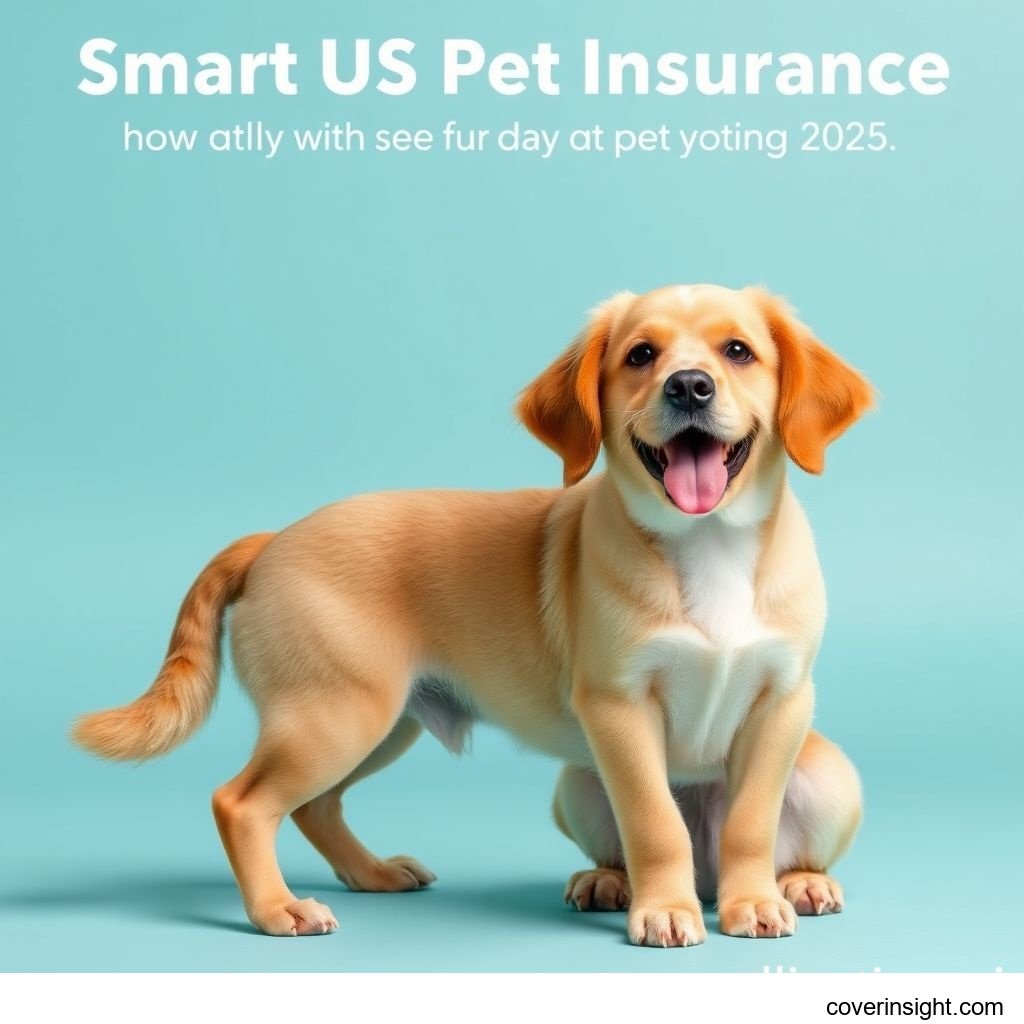Introduction
Navigating the world of pet care can be a rewarding, albeit sometimes expensive, journey. As we look towards 2025, understanding the nuances of pet insurance in the US, especially concerning a pet insurance cost calculator, becomes crucial for responsible pet parents. This tool isn't just about getting a quick quote; it's a vital first step in gaining foresight into potential veterinary expenses, offering a clearer picture of what you might pay to protect your beloved companion. With rising veterinary costs, having a solid plan in place can offer invaluable peace of mind and prevent the heartache of choosing between your pet's health and your wallet.
Coverage Details
Pet insurance policies in the US are designed to cushion the financial blow of unexpected accidents, illnesses, and sometimes even routine care. Understanding what's typically covered—and what isn't—is key to choosing the right plan for your furry family member.
What’s Included
Most comprehensive pet insurance plans in the US cover a wide array of medical conditions and services. This often includes:
-
Accidents: Injuries like broken bones, bite wounds, foreign object ingestion, poisonings, and car accident-related injuries.
-
Illnesses: Conditions such as cancer, diabetes, arthritis, infections, digestive issues, and allergies.
-
Emergency Care: Visits to the emergency vet, often including diagnostic tests, medication, and treatment.
-
Diagnostic Tests: X-rays, MRIs, ultrasounds, blood work, and urinalysis to determine a diagnosis.
-
Surgeries: Costs associated with surgical procedures, anesthesia, and post-operative care.
-
Prescription Medications: Drugs prescribed by a licensed veterinarian for covered conditions.
-
Specialty Care: Referrals to specialists like cardiologists, dermatologists, or oncologists.
-
Dental Illnesses: While routine dental cleaning is often an add-on, coverage for dental illnesses like extractions due to decay or periodontal disease is common in comprehensive plans.
Many providers also offer optional add-ons, often referred to as "wellness plans," which can cover routine preventative care like annual exams, vaccinations, heartworm prevention, and even routine dental cleanings. This can be a smart move if you're looking to budget for your pet's everyday health needs.
Common Exclusions
While pet insurance offers broad protection, there are common exclusions you should be aware of:
-
Pre-existing Conditions: This is arguably the most significant exclusion. Conditions that your pet showed signs of before the policy effective date or during a waiting period are generally not covered. This is why getting coverage early in your pet's life is often recommended.
-
Cosmetic Procedures: Elective procedures like ear cropping, tail docking, or dewclaw removal that are not medically necessary.
-
Breeding and Whelping: Costs associated with breeding, pregnancy, and birth are typically excluded.
-
Experimental Treatments: Therapies or medications considered experimental, investigational, or not yet widely accepted in veterinary medicine.
-
Grooming and Boarding: These non-medical services are not covered.
-
Specific Illnesses: Some policies might have exclusions for certain genetic or hereditary conditions common to specific breeds, especially if not added to a "wellness" or more inclusive plan.
Cost Analysis
Understanding the factors that influence your pet insurance premiums and how to potentially save money is crucial for making an informed decision in 2025.
Price Factors
The price of pet insurance in the US isn't one-size-fits-all; it's a dynamic calculation based on several key elements:
-
Pet's Age: Younger pets generally cost less to insure, as they are less prone to age-related illnesses. Premiums typically increase as your pet ages.
-
Breed: Some breeds are predisposed to certain genetic conditions (e.g., hip dysplasia in large dogs, respiratory issues in brachycephalic breeds), leading to higher premiums. For instance, insuring a Labrador Retriever might cost more than a mixed-breed dog of similar size due to breed-specific health concerns.
-
Location: Veterinary costs vary significantly by region. Major metropolitan areas like New York City or Los Angeles tend to have higher vet fees, which translates to higher insurance premiums. A policy in rural Kansas will likely be more affordable.
-
Deductible: This is the amount you pay out-of-pocket before your insurance coverage kicks in. Plans with higher deductibles typically have lower monthly premiums, but you'll pay more upfront if your pet needs care.
-
Reimbursement Level: This is the percentage of the vet bill your insurance will cover after your deductible is met (e.g., 70%, 80%, 90%). A higher reimbursement level means higher monthly premiums.
-
Annual Limit: This is the maximum amount your policy will pay out in a year. Unlimited annual limits usually come with higher premiums, but offer maximum financial protection.
-
Policy Type: Accident-only plans are the cheapest, followed by accident & illness plans, with comprehensive plans (including wellness add-ons) being the most expensive.
Saving Tips
Even with varying price points, there are several ways to make pet insurance more affordable without compromising on essential coverage:
-
Start Early: Insuring your pet when they are young and healthy helps avoid pre-existing condition exclusions and secures lower premiums.
-
Bundle Policies: Some providers offer discounts for insuring multiple pets. If you have more than one furry friend, inquire about multi-pet discounts.
-
Choose a Higher Deductible: If you have an emergency fund, opting for a higher deductible can significantly lower your monthly premium. Just be prepared to cover that initial cost if an incident occurs.
-
Opt for a Lower Reimbursement Level: While 90% reimbursement sounds great, dropping to 80% or 70% can save you money on monthly premiums, though you'll pay more out-of-pocket per claim.
-
Shop Around: Prices and coverage can vary widely between providers. Use an online pet insurance cost calculator to compare quotes from multiple companies. Don't be afraid to click on "Unlock Savings: Pet Insurance Cost Calculator US 2025" to get started and see how different options stack up.
-
Ask for Discounts: Many insurers offer discounts for military personnel, veterans, employees of certain companies, or even for paying annually instead of monthly.
A recent report by the American Pet Products Association (APPA) indicated that Americans spent an estimated $38.4 billion on vet care and product sales in 2023, a figure that continues to climb. This highlights the ever-increasing cost of pet healthcare and underscores the value of insurance. For example, a dog owner in Texas recently shared their experience where their Golden Retriever, Buddy, needed emergency surgery for bloat, a condition that can cost upwards of $6,000 without insurance. Their policy, which cost them around $50 a month, covered 90% of the $5,800 bill after their $250 deductible, saving them thousands. This kind of real-world relief is precisely what smart pet insurance aims to deliver.
FAQs
How much does pet insurance cost?
The cost of pet insurance varies widely, typically ranging from $25 to $70 per month for dogs and $15 to $40 per month for cats, depending on the factors mentioned above (age, breed, location, deductible, etc.). Using a pet insurance cost calculator is the best way to get an accurate estimate for your specific pet.
What affects premiums?
Premiums are primarily affected by your pet's age, breed, and geographic location, as well as the specific coverage options you choose, including your deductible, reimbursement percentage, and annual payout limit. Essentially, the more comprehensive the coverage and the higher the risk profile of your pet, the higher the premium.
Is it mandatory?
No, pet insurance is not mandatory in the US, unlike human health insurance (though that's a whole different ballgame—you can check out Healthcare.gov for more on human health coverage). It's an optional financial tool designed to help pet owners manage unexpected veterinary expenses.
How to choose?
Choosing the right pet insurance involves comparing providers, understanding policy types (accident-only, accident & illness, comprehensive), evaluating deductibles and reimbursement levels that fit your budget, and checking for common exclusions like pre-existing conditions. Consider your pet's current health, breed predispositions, and your financial comfort level with out-of-pocket expenses. Consulting resources like the National Association of Insurance Commissioners (NAIC) can offer insights into consumer protections and state regulations. Also, don't forget to explore "Insurance Resources Global" for broader industry understanding.
Consequences of no coverage?
Without pet insurance, you are solely responsible for 100% of your pet's veterinary bills. This can lead to significant financial strain during emergencies or chronic illnesses, potentially forcing difficult decisions about your pet's care that no pet parent ever wants to face. Many families have gone into debt or, tragically, faced euthanasia decisions due to overwhelming vet costs. Understanding your options through your "State Insurance Departments" can also provide local context on consumer rights. For a broader overview of coverage options in the US, visit "US Insurance Home".
Author Insight & Experience
Based on my experience, navigating the pet insurance landscape in the US can feel a bit like sifting through a hayloft for a needle at times. There are so many providers, so many plans, and the fine print can be intimidating. As someone living in the US who has seen firsthand the sheer cost of emergency vet visits – a friend's cat needed emergency surgery that tallied over $7,000 – I truly believe pet insurance isn't just a luxury; it's a lifeline. It offers that crucial "peace of mind" that allows you to focus on your pet's recovery rather than whether your savings account will take a devastating hit. It's about proactive care, not just reactive treatment.








Comments